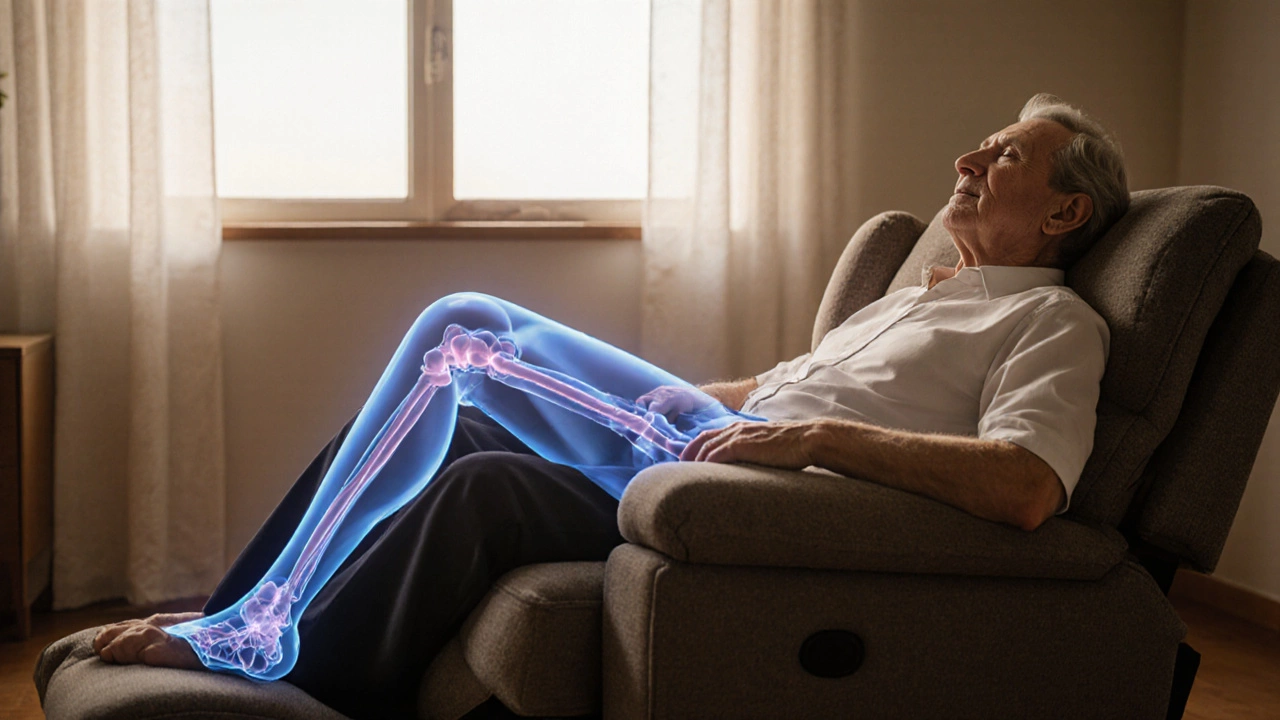
Why Walking After Sitting Feels Hard and How Recliner Chairs Play a Role
Learn why you feel stiff after using a recliner, the body mechanisms involved, and how to pick a chair that keeps you mobile.
When working with blood circulation, the continuous flow of blood delivering oxygen and nutrients while removing waste. Also known as cardiovascular circulation, it is vital for energy, focus, and overall well‑being. Good circulation doesn’t just happen on its own – the way we sit, stand, and move in a room can either support or hinder it.
One of the most direct ways furniture influences blood circulation is through the seat you spend hours in. An ergonomic chair, a chair designed to support the natural curve of the spine and encourage micro‑movements reduces pressure on the thighs and promotes leg‑to‑heart flow. When the chair’s seat height aligns with the knees, it prevents the knees from bending too sharply, a common cause of restricted venous return. This simple adjustment can lower the risk of swelling and fatigue during long work sessions.
Equally important is posture, the alignment of the spine, shoulders, and hips while sitting or standing. Good posture keeps the rib cage open, allowing the lungs to expand fully and the heart to pump efficiently. Slouching compresses the abdominal area, which can impede blood flow back to the heart and increase strain on the circulatory system. By pairing an ergonomic chair with conscious posture habits, you create a feedback loop that continuously supports healthy circulation.
The desk you work at plays a supporting role. A height‑adjustable desk, a workstation that lets you switch between sitting and standing positions encourages regular movement, breaking up the static periods that slow blood flow. Standing for a few minutes every hour triggers the calf muscle pump, which pushes blood upward and reduces the chance of clot formation. Even a fixed‑height desk benefits from proper setup: the monitor should be at eye level to avoid neck strain, and the keyboard should allow elbows to stay close to a 90‑degree angle, ensuring shoulders stay relaxed.
Beyond chairs and desks, storage solutions affect how often you need to shift your body. Open shelving placed at waist height means you reach less, keeping shoulders and arms in neutral positions. Conversely, low cabinets force you to bend, compressing abdominal organs and limiting venous return. Smart storage design therefore helps maintain a neutral spine and keeps blood flowing smoothly throughout the day.
All these elements—ergonomic chairs, correct posture, adjustable desks, and thoughtful storage—form a network that directly impacts blood circulation. When each piece works together, the result is a workspace that not only feels comfortable but also actively supports cardiovascular health. Below you’ll find a curated set of articles that dive deeper into each topic, offering practical tips, product recommendations, and expert insights to help you build a healthier environment.

Learn why you feel stiff after using a recliner, the body mechanisms involved, and how to pick a chair that keeps you mobile.